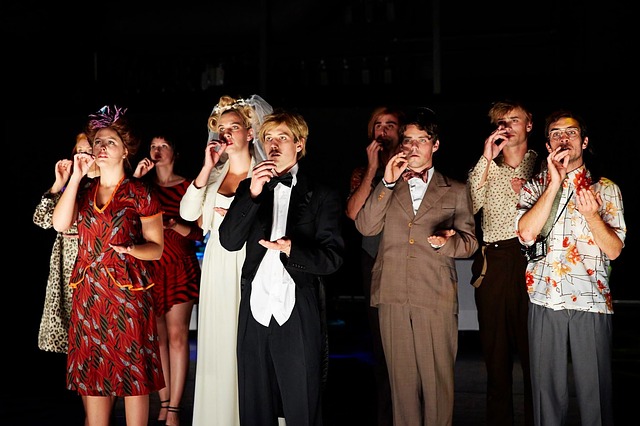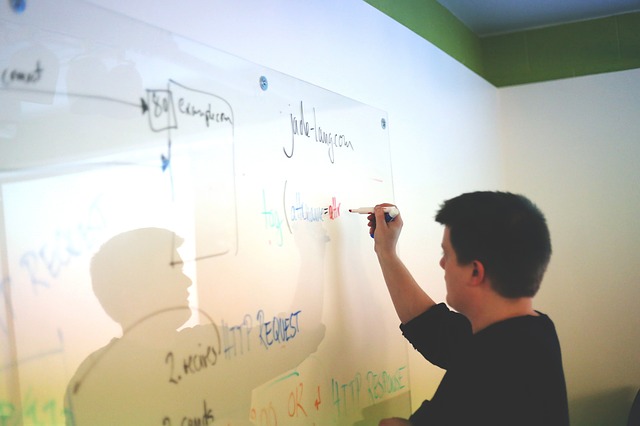What is A Trust Fall? A Trust Fall is a team building exercise in which a person deliberately falls, trusting the members of their team (acting as spotters) to catch them. This is often done from a raised platform of some kind. They fall backwards standing upright in a rigid position usually with their eyes closed relying on the support of their other team members to catch them. It requires the person falling to trust their other team members to catch them before they hit the ground. Why Use A Trust Fall? This quick team building activity is all about…
Author: David Priestley
The purpose of this article is to give you some hints and tips for planning your next training workshop and the key information that should be covered in your training plan. By preparing a training plan before your workshop, you can make sure that you are covering a realistic amount in the available time, and that you only include activities that will help learners get the most from the experience and link to your training content. When designing your programme, you should include the following: Workshop / Training Objectives Duration (both for individual activities and complete programme) Venue and Facilities Selection…
Using a role play during training is a great way to act out a situation for the purpose of further discussion and analysis. Role-plays can help learners to identify problems, share experiences and discuss possible solutions. Resources: None Space Required: Small training room/classroom. Group Size: 6 to 12 people Total Time: 40-55 minutes 5 minutes to introduction to the exercise 10 minutes per role-play followed by discussion (3-4 role plays) 5-10 minutes for final exercise review and debrief Role-play Exercise Setup Before you begin, you will need to select a topic or theme to cover. When selecting a topic, it is…
The group race against the clock and work together to build a stretcher and transport one of their team members to safety. Equipment Required: 2 poles – 5ft or longer (e.g. broom poles, fence posts etc), rope or para cord and cones to define areas, optional: sleeping bag or blanket. (*The idea is to limit the equipment to what they would likely have on an expedition) Space Required: Large. Indoors or outdoors. Group Size: 6 to 12 (for larger groups consider splitting into smaller teams) Total Time: 60 minutes 5 minutes to brief and set up 40 minutes to achieve outcome 10-15 minutes to review…
A case studies session consists of several detailed description of events that are used for discussion and learning. The events can be taken from a real life situation or can be completely fictional. The purpose of a case study is take the group closer to the real context of a situation or problem and identify its cause and solution. A case study can be used as part of a training workshop to facilitate a learning point or as part of an assessment programme to gauge candidate’s response and analysis of situations. Case studies can be great for sharing experiences and…
Group discussions are used by effective trainers to promote exchanging of ideas and active learning. One way to facilitate a group discussion is known as the Gallery Exercise. In the gallery group discussion exercise, participants work in smaller groups and discuss issues related to a certain topic or subject. The room is organised into separate areas with a different topic or subject to be discussed at each area. Each area has some chairs and a table with a big board with a sheet of flipchart paper attached (aka, the ‘gallery’). Each group is allocated an area to begin, they then discuss the topic…
This is an excellent training technique which is used to discuss a subject or topic in detail and help participants elaborate views and share ideas in smaller groups. During this exercise, the topic is broken down into several sub-topics (for discussion at each station). Participants are split into smaller groups and move from one station to another discussing each sub-topic independently. When coming up with ideas for discussion points, a good rule to follow is that any separate part should not be dependent on the discussion results of other parts, they should remain independent of each other. For example, the…
This is a creative, problem-solving activity where team members work together to build a structure out of the foil provided. This exercise is best done in small groups of no more than three or four people. Resources: Aluminium tinfoil, Scissors Space Required: Minimal. Delivered either indoors or outdoors. Group Size: 6 to 24 working in smaller groups of 3 – 4 people Total Time: 25-30 minutes 2-5 minutes to brief and set up 15-20 minutes for Foil Fun exercise 5 minutes to review and debrief Foil Fun Team Activity Instructions Each group is given two sheets of tinfoil. Their challenge is to…
In this article, I’ll look at the basics of coaching in the workplace and provide 7 tips and key approaches that you can use to be a successful coach. The process of coaching typically involves developing a skill already learned or mentoring team members to help them develop and improve performance. The key point to remember is that if your team or group already possesses some level of competence you are then coaching, if you are working with a group with no prior experience then you are instructing or teaching. Instructing involves imparting new knowledge. Coaching involves developing and building…
Teams work together to build a free-standing shelter which the whole team must be able to fit under, using just newspaper and sellotape. This a fun team building activity, which is great for improving teamwork, problem solving and creative thinking skills. Perfect for those on a tight budget. Resources: Stack of newspapers and two rolls of sellotape per team Space required: Small to Medium (depending on number of teams). Can be done either Indoors or outdoors. Group size: 8-36 people (Split into smaller teams of 4 to 6) Total Time: 70-75 minutes 5 minutes to brief and set up 10…
‘Toss Me Some Feedback’ is a fun blindfold activity that explores the importance of feedback, leadership and support from the team in order to achieve successful outcomes. This activity can be set up with some basic equipment and helps support the development of coaching and communication skills. Resources: Balls/beanbags (or similar items), blindfolds, stopwatch, masking tape and plastic buckets (empty boxes can also be used). Space required: Medium to Large. Indoors or outdoors. Group size: 8 to 16 people (can be done with larger groups competing against each other). Total Time: 50 minutes 5 minutes to brief and set up…
Creating a group resume is a fun way to help team members build better rapport and appreciate each other’s qualities and experiences. Group resume can be used as either an ice breaker exercise or as a quick team builder. This activity can be especially effective if the resume is focused on a specific subject matter linked to the training workshop, meeting or project. Resources: Flip chart paper and markers Space required: Small. Indoors or outdoors. Group Size: 6 to 16 people (divided into smaller sub-groups) Total Time: 25-35 minutes 5 minutes to brief and set up 10-15 minutes for group…









